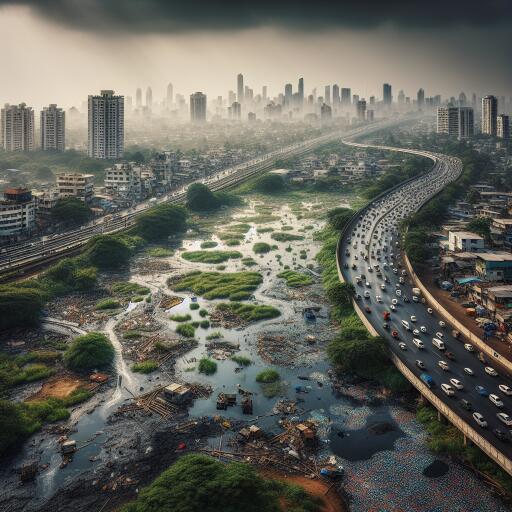
Conserving Indian wetlands requires innovative strategies, long-term planning, effective policies, and stringent laws to safeguard these critical ecosystems.
Wetlands, often called the “Earth’s kidneys,” cover approximately 4.86% of India’s land area. These ecosystems play an essential role in maintaining ecological balance, yet face significant threats from urbanisation, pollution, and unsustainable land use practices. Urban wetlands are especially at risk due to the rapid pace of city expansion and uncontrolled sewage discharge.
Every year, February 2 marks World Wetlands Day, underscoring the importance of wetlands for the health of our planet. The current theme, “protecting wetlands for our common future,” echoes their threatened status worldwide.
Wetlands function as natural sponges, preventing floods and erosion by absorbing excess water. They sequester large amounts of carbon and serve as natural filtration systems. Additionally, they host diverse life forms, including microbes, plants, insects, amphibians, reptiles, birds, and mammals.
India boasts a variety of critical wetlands, from the high-altitude Himalayan areas to coastal marshlands, inland lakes, and riverine plains. Notably, not all are listed under the Ramsar Convention, an international treaty aimed at conserving wetlands and their resources.
In recent developments, India has expanded its Ramsar list with new additions, bringing the total to 89 recognised sites. Prominent Ramsar wetlands include Sundarbans in West Bengal, Chilika Lake in Odisha, Keoladeo National Park in Rajasthan, Vembanad-Kol Wetland in Kerala, and Renuka Wetland in Himachal Pradesh.
Despite this recognition, many Indian wetlands remain under threat. For example, the Chatra Wetland has seen significant degradation over the past decades due to urban expansion, while Harike Wetland in Punjab has experienced shrinkage from agricultural encroachment.
Sewage and industrial effluents, containing microplastics and synthetic fibers, pollute many wetlands. The Vembanad-Kol Wetland in Kerala suffers from high microplastic levels in its waters and sediments. A study of Mumbai’s mangroves showed worrying levels of microplastic pollution, which significantly impact the wetland environment and the species that depend on it.
Poor sanitation practices, combined with ineffective waste management, promote invasive plant species that threaten local biodiversity and disrupt ecosystem functions. Weak water quality regulations further exacerbate the problem, diminishing wetland resilience and their capacity to recover from ecological disturbances.
In Assam’s Deepor Beel, wetlands are being compromised by habitation, alongside threats from pollution, overfishing, and poaching of migratory birds.
Compounding these problems are climate change impacts, such as altered precipitation patterns and frequent droughts, which destabilize wetland ecosystems. Changes in river flows and evaporation rates degrade habitats, while accelerated sea-level rise poses risks to wetland species and ecosystem productivity.
Research highlights increased inundation risks from sea-level rise, threatening urban wetland integrity with saltwater intrusion and degradation.
India is actively pursuing several initiatives including the National Wetlands Conservation Programme and the National Mission for Clean Ganga, which aim to protect and restore these vital systems. State-level programs complement these efforts, such as Tamil Nadu’s dedicated wetlands mission.
Nonetheless, challenges persist due to insufficient awareness of wetland importance, competing land use demands, inadequate monitoring systems, and weak legal frameworks. Two Ramsar sites, Loktak Lake and Keoladeo National Park, are currently listed in the Montreux Record due to adverse changes in ecological character.
There’s an urgent need for integrated approaches and innovative strategies to protect these ecosystems. Comprehensive studies on biodiversity and ecosystem services can underline the significance of lesser-known wetlands. Complementary efforts to raise awareness about traditional wetland activities are vital.
Such initiatives could facilitate the inclusion of more wetlands in conservation lists, ensuring they receive the necessary protection and resources for sustainable management.





Leave a Reply